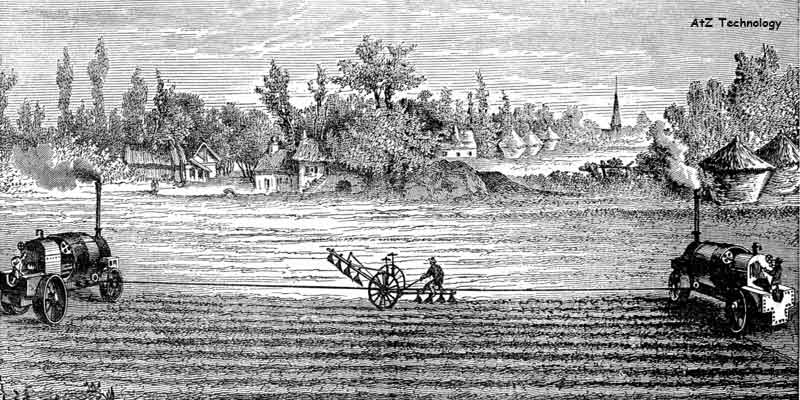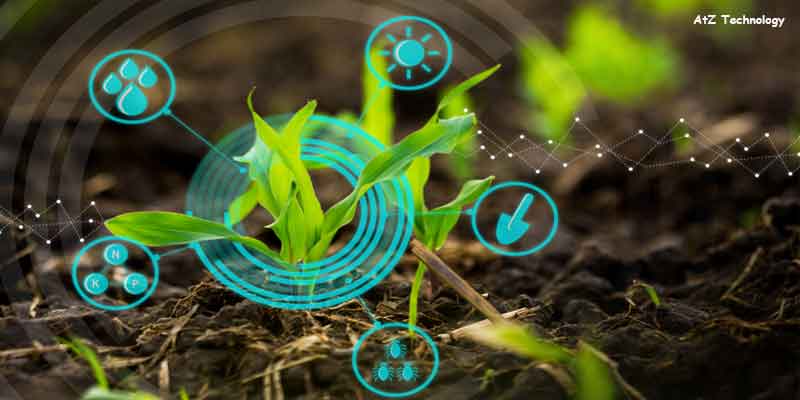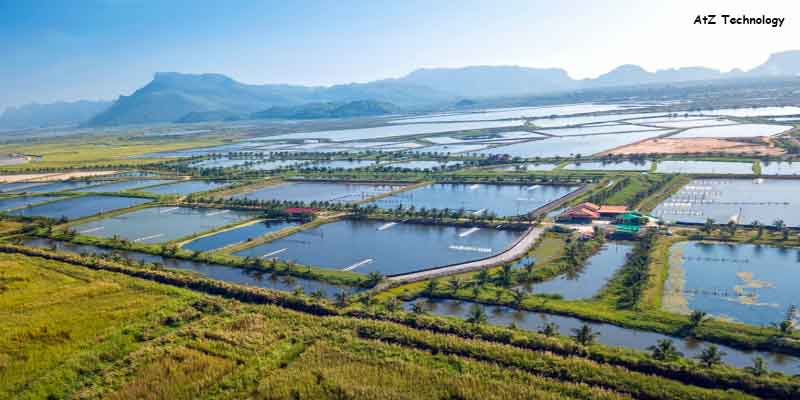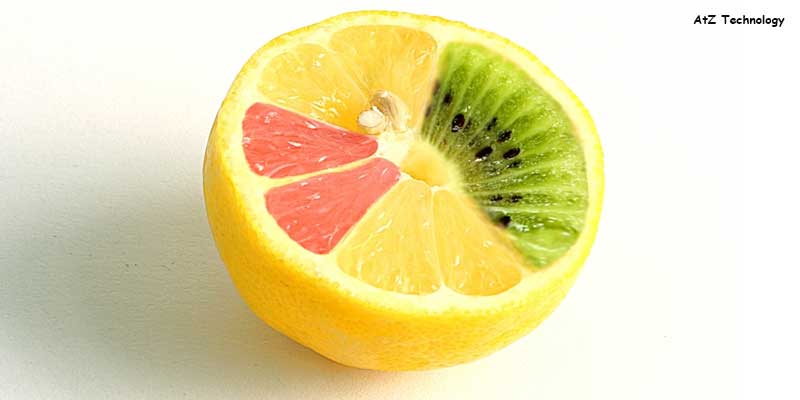I have a dream to do agriculture work if I get the opportunity and I think you too want that.
However, before driving into the main ground field work you should what is the pros and cons of agricultural technology.
One of my friends told me “ theory work or paper and pen work first then field work”.
I love his advice and love it. You can do it too if you like the thought.
Understating some posting and negative gives a better idea of what can be happened in future with you.
So you can be prepared with that and reduce the cost of it.
Ok! Let’s drive into the main pen and paperwork.
Table of Content
- Definition of Agricultural Technology
- History of Agricultural Technology
- Pros and Cons of Agricultural Technology
- Advantages of Modern Technology in Agriculture
- Positive Impact of Agricultural Technology
- Advantages Or Benefits of Modern Technology in Agriculture
- Positive Effects of Agricultural Technology with Modern Equipment/ Tools/ Inventions
- GDP From Agriculture in Asia
- Disadvantages of Agriculture Technology
- Conclusion
- FAQ
Definition of Agricultural Technology
Agricultural technology is the machinery and various equipment used with the purpose of the novel cause of agriculture, food-related research, natural resources and its development for better production.
History of Agricultural Technology

Agriculture is very important since humans are creating. But the evaluation of history is development the agricultural system. When humans gain knowledge about science Agricultural technology is developing.
105,000 years ago wild grains were collected and eaten. However, domestication did not occur until much later. The eight Neolithic founder crops – emmer wheat, einkorn wheat, hulled barley, peas, lentils, bitter vetch, chickpeas, and flax were cultivated around 9500 BC in the Levant. Rye may have been planted earlier.
By 6200 BC Rice was subjugated in China with the known cultivation from 5700 BC, followed by mung, soy, and azuki beans. Around 11,000BC Pigs have subjugated in Mesopotamia, Between 11,000BC and 9000 BC followed cattle.
In 18,000 BC Cattle were subjugated from the wild aurochs in modern Turkey and Pakistan. Around 7000 BC Sugarcane and some root vegetables were subjugated in New Guinea
From the Sahel, the region of Africa in 3000BC Sorghum was subjugated. Between 8000BC and 5000BC In South America, the potato was subjugated along with beans, coca, llamas, alpacas, and guinea pigs.
In Papua New Guinea Bananas were hybridized. By 4000BC wild teosinte was Subjugated to maize in Mesoamerica. In Peru, by 3600 BC Cotton was subjugated.
Mesopotamian Sumer, ancient Egypt, the Indus Valley Civilisation of the Indian subcontinent, ancient China, and ancient Greece witnessed the intensification of agriculture in civilization in The Bronze age 3300BC.
The expansion of ancient Rome, both the Republic and then the Empire, throughout the ancient Mediterranean and Western Europe built upon existing systems of agriculture while also building up the manorial rules that became a bedrock of medieval agriculture During the iron age and era of classical antiquities.
Agriculture was changed with improved techniques and diffusional crop plants, including the introduction of sugar, rice, cotton, and fruit trees such as the orange to Europe by way of Al-Andalus, in the middle age, the Islamic world, and in Europe.
The Columbian exchange brought New World crops such as maize, potatoes, sweet potatoes, and manioc to Europe, and Old World crops such as wheat, barley, rice, and turnips, and livestock including horses, cattle, sheep, and goats to the Americas after the voyages of Christopher Columbus in 1492s.
Over the past 200 years, beginning with the British Agricultural revolution Irrigation, crop rotation, and fertilizers were introduced soon after the Neolithic Revolution and developed much further.
Pros and Cons of Agricultural Technology
Before doing or starting any of the work the primary thing you need to search on the search engines is to find out the posting and negative impact of that work.
If you see most of the things are talking or websites and telling or giving positive ideas then you should go for it.
In this case, I am telling about the positive and negative impacts of modern technology.
From this brief knowledge, you can understand what should you do. Should you use modern technology in your agriculture work or not?
Advantages of Modern Technology in Agriculture

With the advantages of modern technology in agriculture, anyone can reduce time and build better productivity in the farming area. Here are some advantages:
- Modern equipment can increase productivity with limited time.
- Can give proper water to the crops.
- While machines can guide the perfect place to input the seeds.
- They use transportation when they need it.
- Can text whether the soil is good for crops or not.
- Through modern technology Irrigational problems can be solved in an easy way.
- Pest is a big issue when it comes to throwing by hand. In this case, using new agricultural technology can control chemical pests.
- They can increase the demand and price of the products.
- Farmers can be up-to-date on weather conditions as well.
- Better marketing and good exposure to the price can easily be possible.
- Farmers take benefits from online trading and E-commerce.
- Able to know how much water is needed which also reduces the total cost.
- Help to improve the ecosystem.
Positive Impact of Agricultural Technology

There are enormous benefits to agricultural technology if farmers take it.
Farmers are not required to apply pesticides, fertilizers, and water across the entire field by hand. Instead, they can target specific areas or plants individually and use the fewer qualities required. Other benefits are:
- Increase productivity
- Help to reduce the use of pesticides, fertilizer, and water, which give more food at fewer prices.
- Improve natural ecosystems.
- Using less of chemicals means less runoff into rivers and groundwater
- Improve worked safety.
Furthermore, Robotic technologies help to improve monitoring and management control to damage natural resources such as air and water quality. It gives more products control over the animal production, storage, distribution, processing, and plant which results in:
- Better productivity and fewer prices
- Good foods and safer growing conditions
- Improve ecological impact and environmental
Advantages Or Benefits of Modern Technology in Agriculture
Positive Effects of Various types of Agricultural Technology with Modern Equipment/ Tools/ Inventions

There are different types of Agriculture Technology and those are:
- Drones
- Satellite photography and sensors
- IoT-based sensor networks
- Phase tracking
- Weather forecasts
- Automated irrigation
- Light and heat control
- Intelligent software analysis for pest and disease prediction, soil management and other involved analytical tasks
- Biotech
- Soil and water sensor
- Weather Tracking
- Satellite imaging
- Pervasive Automation
- Minichromosome technology
- RFID Technology
- Vertical farming
Let’s know some little information about those Agricultural technologies-
1. Drones
A drone is a high-tech aircraft which have a camera system in today’s era.
It is the term of the robotics system.
Dron uses the crop fields to scan the faded part of the crops and image them.
It has also a GPS tracker map which is highly appreciated in today's agric sensors
2. Satellite Photography and Sensors
Satellite photography and sensors are based on spatial resolution.
It is limited when detecting of phenological events due to spatial resolution and soil background characteristics.
It used the practice of precision agriculture.
The satellite took an image and send it to the farmer for this farmers can know about the details of their field.
3. IoT-based Sensor Networks
The most important thing is Agriculture irrigation.
This irrigation is analyzed by the internet of things(loT) which is a network of sensors for the application of agriculture optimum irrigation.
4. Phase Tracking
Monitoring is the main job of phase tracking. By taking the phase tracking farmers can know about the rural development rate and encourage themselves to work more.
5. Weather Forecasts
Weather forecasting is a common thing for us nowadays.
Because we can analyse future forecasting by using simple software that tracks the location and tell about the weather.
And by this farmers are also taking care of their crops more and more.
6. Automated Irrigation
Automated irrigation is the software that tracks the changes in the flow of water from one bay or set bays to another that can occur in the absence of irrigation.
7. Light and Heat Control
In Today's world, there is some robotics system where can one know about light and heat control.like-ph controlar, EC value,CO2 concentration,atomization.
8. Biotech
Biotech is working for farmers, producers, and consumers. biotechnology is-
- Antibiotics
- Vaccines
- Flowers
- Biofuels
- Plant and animal breeding
- Pest resistant crops
- Pesticide-resistant crop
- Nutrients supplement
- Abiotic stress resistance
- Industrial strength fibres
9. Minichromosome Technology
A Minichromosome is contained in a small structure of one single cell. It includes a small amount of genetic material but grabs quality information.
Agriculture genetics is minichromosome technology. Geneticists add dozens of jobs and grow a fresh and new planet.
GDP From Agriculture in Asia
In today’s world, 40% of the Gross Domestic Product (GDP) is dependent on Agricultural technology and agriculture. There is an overview of 10 Asian countries' GDP:
10 Asian Countries GDP from Agriculture
Adoption of Genetically Engineered Crops in The U.S
Disadvantages of Agriculture Technology
Certainly, every innovation has some sort of negative effect of technology on agriculture.
It is very common that every innovation will have a few cons in the industry.
Ok, let’s look the some of the disadvantages of agriculture technology:
- Most of the time the equipment maintenance cost is so high for the new entrepreneur. Because they can't effort it and adapt to the new technology.
- Overuse of Fertilisers And Pesticides will be harmful to human health and the environment as well. Not only that more of the pesticides killed the soil growth. In the rainy season, it will be a big health issue.
- Most of the farmers are illiterate. So they do use the regular and traditional tools which create more problems but they are not aware of that. Moreover, they are missing the good output of technology and the best production of agriculture.
- More use of technology is diminishing soil fertility. Modern technology is more consent about more production without underrating the soil health.
- The uneducated and ground-level of workers are losing their job because of modern technology which is an alarming issue. Those people don’t know anything without those cutting and traditional framing work or services.
- Lack of practical knowledge and underrating they can adopt the advantage equipment and do not know how to use those machines properly.
- More use of the machines can lead to a dangerous cost to the environment.
Conclusion
After all this information we can notice that agriculture is a big part of our developing world. Both Pros and Cons of Agricultural Technology give you a better understanding should you use technology or not.
We know that, if agriculture is developed the country is called a most developing country. So, directly and indirectly, this Agricultural Technology will be the best technology in this robotics world.
FAQ
What Are the New Technologies in Agriculture?
1. Bees and Drones
2. Artificial intelligence, automation and the Internet of Things
3. Blockchain Technology
4. Urban Agriculture and Vertical Farming
5. Genetic editing
Which Country has The Best Agricultural Technology?
References:




